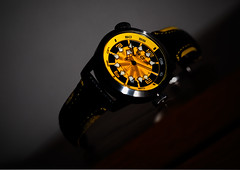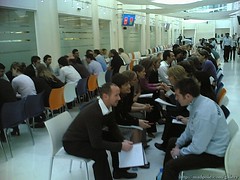 |
| Time me (Photo credit: mrlins) |
Some people dislike it because of the speed at which you connect with people without having a chance to really have a conversation.
The purpose of attending a speed networking event is that you get to talk to EVERYONE in the room and not just the half a dozen people you manage to connect with at a normal networking event. For this reason, they're popular.
It's noisy, it's frantic but it can be fun and don't forget that it's only the initial connection that you're making. It's then your chance to follow-up after the event and really get the conversation going.
The same criteria apply to your reasons for attending other networking meetings. Are they the right people for you to meet.
Some speed networking events operate a closed policy in that only one person from each industry is represented. That way you won't meet five accountants, six printers etc.
There are different ways of running the event and the host needs to be skilled in moving people around the room in a timely manner so that it works smoothly.
They tend to work in two main ways:
 |
| Speed Networking 5 (Photo credit: MadPole) |
Method 2 - you're seated in small groups around tables. Only one person on each table speaks at any one time and circulates in an organised way (according to a complicated equation understood only by higher mathematicians and NASA), so that by the end, everyone has still presented to everyone else but the volume level is lower and you don't have to repeat yourself to the number of attendees.
With Method 1 - potentially dozens of people are talking at one time, it's noisy and can be confusing - who's turn is it to speak, how much time have you got, where do you go next. Method 2 is less frantic and much more comfortable.
You're also likely to be slightly brain dead by the end of it. Being bombarded by information from twenty to thirty strangers is confusing and overwhelming. Here are a few tips for speed networking:
- Leave bags, coats at the side of the room - have the minimal amount to carry around - you'll be moving around a lot.
- Check how many people are going to be there and have enough business cards, leaflets etc. for everyone. You don't want to run out.
- Have a bottle of water with you - you'll be doing a lot of talking (Method 1).
- Hone your one minute presentation - keep it clear and succinct. If you can and you have time, ask a couple of questions.
- Take notes - you won't be able to remember half the people you've met by the time you've finished. Write on their business card or notebook but remember you don't have much time and you need to be listening.
- Make a note of anyone you'd like to talk to again, as you go - you might be able to talk to them after the main session.
Remember to follow-up afterwards.


No comments:
Post a Comment